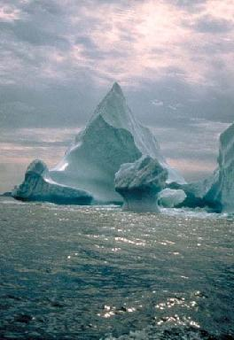NOAA/WDS Paleoclimatology - Late Quaternary SW Pacific Foraminifer Data
This archived Paleoclimatology Study is available from the NOAA National Centers for Environmental Information (NCEI), under the World Data Service (WDS) for Paleoclimatology. The associated NCEI study type is Paleoceanography. The data include parameters of paleoceanography with a geographic location of South Pacific Ocean. The time period coverage is from 170000 to 0 in calendar years before present (BP). See metadata information for parameter and study location details. Please cite this study when using the data.
- Cite as: Weaver, P.P.E.; Carter, L.; Neil, H.L. (1998-07-01): NOAA/WDS Paleoclimatology - Late Quaternary SW Pacific Foraminifer Data. [indicate subset used]. NOAA National Centers for Environmental Information. https://doi.org/10.25921/56p7-pe54. Accessed [date].
- Please refer to Credit tab for full citation information.
- doi:10.25921/56p7-pe54
- noaa-ocean-2577
- NCEI DSI 1200_02
- NCEI DSI 1200_01
noaa-ocean-2577
| Search Data |
|
| Download Data |
|
| Distribution Formats |
|
| Ordering Instructions | Contact NCEI for other distribution options and instructions. |
| Distributor | NOAA National Centers for Environmental Information
ncei.info@noaa.gov |
| Dataset Point of Contact | NOAA National Centers for Environmental Information
ncei.info@noaa.gov |
| Dataset Point of Contact | Data Center Contact
NOAA World Data Service for Paleoclimatology 828-271-4800 paleo@noaa.gov |
| Coverage Description | Date Range: 170000 14C yr BP to 0 14C yr BP; Date Range: 170000 cal yr BP to 0 cal yr BP; |
| Time Period | -168050 to 1950 |
| Spatial Bounding Box Coordinates |
N: -40.4
S: -49.7
E: 179.5
W: -178.5
|
| Spatial Coverage Map | |
| General Documentation |
|
| Associated Resources |
|
| Publication Dates |
|
| Data Presentation Form | Digital table - digital representation of facts or figures systematically displayed, especially in columns
|
| Dataset Progress Status | Complete - production of the data has been completed |
| Data Update Frequency | Data update frequency not available |
| Supplemental Information |
ABSTRACT SUPPLIED BY ORIGINATOR: A series of cores from east of New Zealand have been examined to determine the paleoceanographic history of the late Quaternary in the SW Pacific using planktonic foraminiferal data. Distinct shifts of species can be seen between glacial and interglacial times especially south of Chatham Rise east of South Island. Foraminiferal fragmentation ratios and benthic/planktonic foraminiferal ratios both show increased dissolution during glacials, especially isotope stage 2 to the south of Chatham Rise. The present-day Subtropical Convergence appears to be tied to the Chatham Rise at 44°S, but during glacial times this rise separated cold water to the south from much warmer water to the north, with an associated strong thermal gradient across the rise. We estimate that this gradient could have presented as much as an 8°C temperature change across 4° of latitude during the maximum of the last ice age. There is only weak evidence of the Younger Dryas cool event, but there is a clear climatic optimum between 8 and 6.4 ka with temperatures 1°–2°C higher than the present day. The marine changes compare well with vegetational changes on both South and North Island.
|
| Purpose | Records of past climate and ocean circulation derived from marine sediments. Parameter keywords describe what was measured in this dataset. Additional summary information can be found in the abstracts of papers listed in the dataset citations. |
| Dataset Citation |
|
| Cited Authors |
|
| Originators |
|
| Publishers |
|
| Theme keywords | Global Change Master Directory (GCMD) Science Keywords
|
| Data Center keywords | Global Change Master Directory (GCMD) Data Center Keywords
|
| Place keywords |
|
| Use Constraints |
|
| Access Constraints |
|
| Fees |
|
Last Modified: 2024-03-22
For questions about the information on this page, please email: ncei.info@noaa.gov
